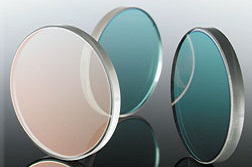As is well known, optical performance is the iconic performance of glass. As a transparent material, the quality of glass is directly determined by its optical performance. The optical performance testing indicators generally include refractive index dispersion coefficient, X-ray resistance performance, precision testing of visible refractive index, spectral transmittance, ultraviolet refractive index, infrared refractive index, optical uniformity, refractive index temperature, stress birefringence, etc. We can evaluate the performance of glass by detecting these indicators. Then, by adjusting the raw material composition, starting process, lighting conditions, heat treatment process, photochemical reaction, coating and other methods, we can improve the relevant indicators to meet our requirements.
To put it bluntly, glass optical performance testing is actually testing the refractive performance, scattering performance, reflection performance, absorption performance, and transmission performance of glass. All indicators are also centered around these four major performance indicators. Let’s discuss these aspects with everyone below
1、 Refractive index detection analysis
The refractive index is a phenomenon where the speed of light passing through glass decreases. The refractive index of glass is closely related to its density, temperature, thermal properties, and composition. The refractive index of glass is determined by the polarization index and density of ions inside the glass. The higher the polarization index of internal ions, the greater the energy absorbed by light after passing through, and the greater the decrease in propagation speed, which means the refractive index will be higher. In addition, the higher the density, the greater the decrease in light propagation speed, and the higher the refractive index. We can use a V-prism refractometer for measurement.
2、 Analysis of dispersion performance detection
Dispersion refers to the phenomenon where the refractive index of glass varies with the incident broadcast field. Dispersion detection includes indicators such as average dispersion performance, partial dispersion performance, and dispersion coefficient. The dispersion of light waves through glass can result in chromatic aberration, color spots, imaging distortion, and other phenomena, which are important factors to consider in the design of optical systems made of glass materials. Abbe number is one of the important reference indicators for eliminating dispersion in relational systems. We can measure dispersion performance while detecting refractive index.
3、 Reflection performance detection and analysis
The reflection performance mainly tests the performance of both direct reflection and diffuse reflection of light through glass. Direct reflection refers to the reflection of light through a flat and smooth glass surface. Diffuse reflection refers to the reflection of light through a rough and uneven glass surface. The reflection performance depends on factors such as the smoothness of the glass surface, the angle of light projection, the refractive index of the glass, and the frequency of the incident tube. We can reduce the reflection coefficient of the glass surface by polishing and coating.
4、 Analysis of absorption and transmission performance testing:
When light passes through glass, the ability of the glass to absorb a portion of energy is called absorption performance, while the ability to pass through the glass is called transmission performance. The absorption capacity includes ultraviolet absorption performance and infrared absorption performance. Lead glass or vulcanized glass has a larger infrared absorption wavelength than oxide glass due to its larger atomic weight and smaller force constant. Good infrared absorption means low infrared transmission performance. The absorption and projection performance can be tested using a dual beam spectrophotometer.
The optical performance of glass is mainly evaluated comprehensively based on indicators such as refractive index, dispersion coefficient, and birefringence. The factors that affect the optical properties of glass, in addition to some physical and chemical properties, are also noteworthy for their thermal properties. When testing the optical performance of glass, we must comprehensively consider all influencing factors to ensure the scientific, accurate, and effective testing results.




